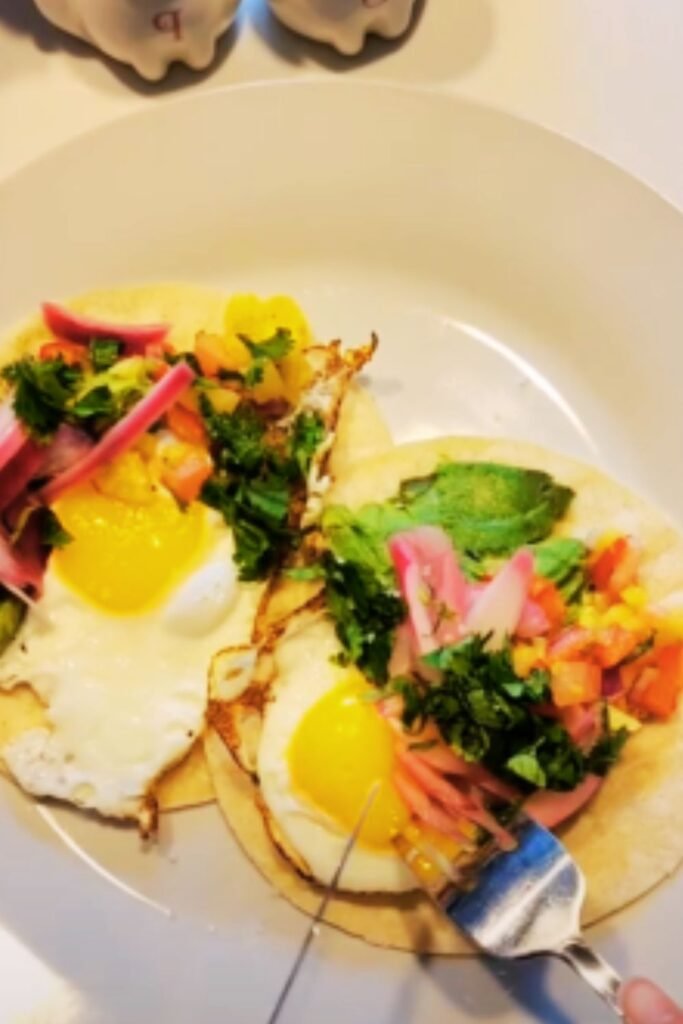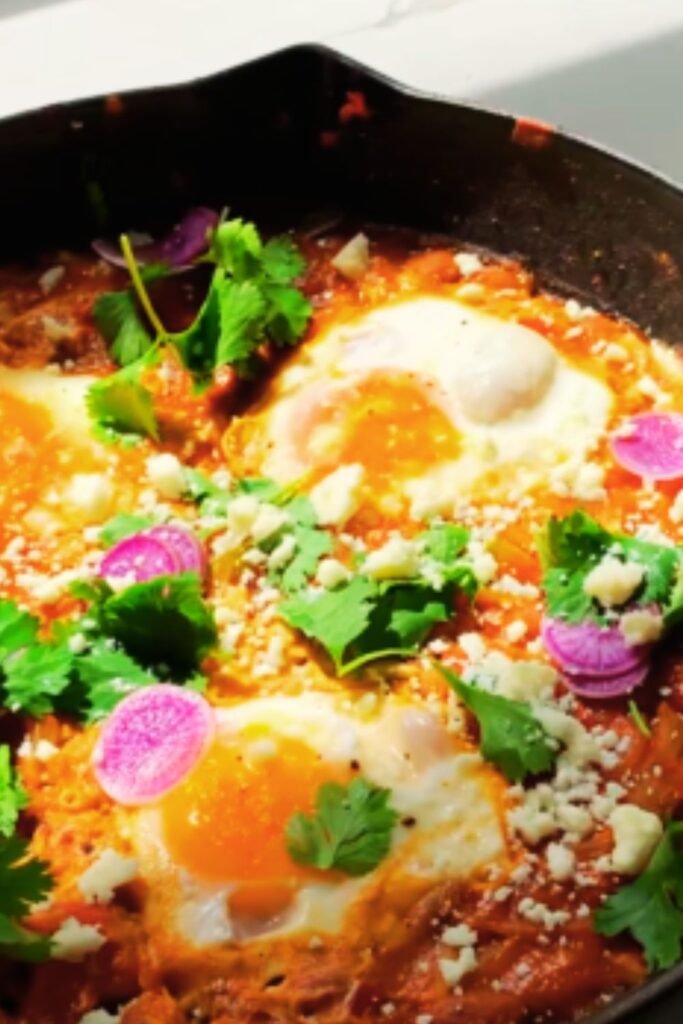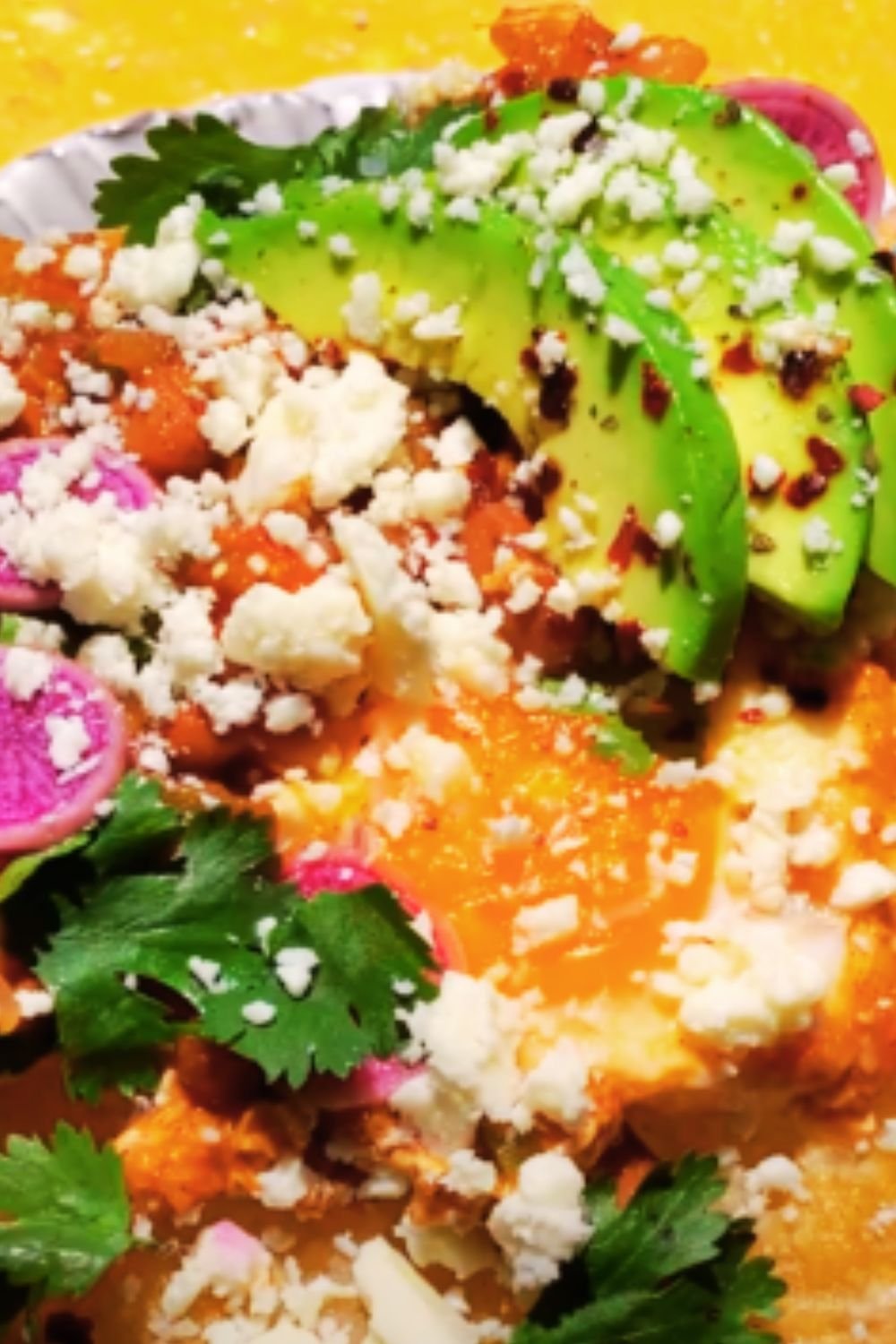There’s something magical about the first bite of perfectly made huevos rancheros. The runny yolk cascading over crispy tortillas, mingling with spicy salsa and creamy beans – it’s a symphony of flavors that awakens every sense. I’ve spent years perfecting this beloved Mexican breakfast dish, and today I’m sharing everything I’ve learned to help you create restaurant-quality huevos rancheros in your own kitchen.
This isn’t just another breakfast recipe; it’s a culinary journey that connects you to centuries of Mexican tradition. Whether you’re hosting a weekend brunch or simply want to elevate your morning routine, mastering huevos rancheros will give you a dish that’s both comforting and impressive.
Understanding Huevos Rancheros: More Than Just Eggs and Salsa
Before we dive into the recipe, let me share what makes authentic huevos rancheros special. The name literally translates to “ranch-style eggs,” and it originated as a hearty breakfast for Mexican ranch workers who needed sustaining fuel for long days of physical labor.
Traditional Components:
- Fresh corn tortillas (never flour)
- Perfectly fried eggs with runny yolks
- Homemade salsa ranchera
- Refried beans
- Mexican crema or sour cream
- Fresh cheese (queso fresco or cotija)
- Sliced avocado
- Fresh cilantro
The beauty of huevos rancheros lies in the balance of textures and flavors. Each component plays a crucial role, and when executed properly, they create a harmonious dish that’s greater than the sum of its parts.
Essential Ingredients for Perfect Huevos Rancheros
Let me break down the ingredients you’ll need, along with my preferred brands and substitutions when necessary.
Primary Ingredients
| Ingredient | Quantity | Quality Tips | Substitutions |
|---|---|---|---|
| Corn tortillas | 4-6 pieces | Fresh from tortilleria preferred | Store-bought white corn tortillas |
| Large eggs | 4-6 eggs | Free-range, room temperature | Duck eggs for richness |
| Roma tomatoes | 4-5 tomatoes | Firm, deep red color | San Marzano canned tomatoes |
| White onion | 1 medium | Sweet variety preferred | Yellow onion acceptable |
| Jalapeño peppers | 2-3 peppers | Fresh, firm texture | Serrano for more heat |
| Garlic cloves | 3-4 cloves | Fresh, plump cloves | Garlic powder (1 tsp) |
| Vegetable oil | 1/2 cup | Neutral flavor oil | Canola or peanut oil |
Supporting Ingredients
| Ingredient | Quantity | Purpose | Storage Tips |
|---|---|---|---|
| Refried beans | 1 can (15 oz) | Protein and texture | Refrigerate after opening |
| Mexican crema | 1/2 cup | Cooling element | Sour cream substitute works |
| Queso fresco | 4 oz | Authentic flavor | Keep refrigerated, crumbles easily |
| Avocados | 2 ripe fruits | Creamy richness | Press gently to test ripeness |
| Fresh cilantro | 1 bunch | Bright finish | Store in water like flowers |
| Lime | 2-3 limes | Acid balance | Room temperature for more juice |
The Secret to Perfect Salsa Ranchera
The heart of exceptional huevos rancheros is the salsa ranchera. This isn’t your typical salsa – it’s a cooked sauce that brings depth and complexity to the dish. Here’s my foolproof method:

Roasting the Vegetables
I always start by roasting the tomatoes, onions, and peppers. This step is crucial because it develops the deep, smoky flavors that make restaurant-quality salsa. Place your Roma tomatoes, halved onion, and whole jalapeños on a cast-iron skillet or comal over medium-high heat.
Char the vegetables until they develop black spots and become tender. The tomatoes should be soft and slightly collapsed, the onion should have caramelized edges, and the jalapeños should be blistered all over. This process takes about 15-20 minutes, but the flavor development is worth every minute.
Blending Technique
Once your vegetables are properly charred, let them cool slightly before blending. I remove the seeds from the jalapeños (save them if you want extra heat), and blend everything with fresh garlic and a pinch of salt. The consistency should be chunky, not smooth – you want texture in your salsa.
Season generously with salt and taste for heat level. Remember, you can always add more jalapeño seeds or a pinch of cayenne, but you can’t take the heat away once it’s there.
Preparing the Perfect Tortilla Base
The tortilla foundation is often overlooked, but it’s crucial for structural integrity and flavor. I’ve learned that the difference between soggy and crispy tortillas lies in the preparation method.
Heating and Crisping
Heat a cast-iron skillet or comal over medium heat. Lightly brush each tortilla with oil – not too much, just enough to promote even browning. Cook each tortilla for about 30-45 seconds per side until they develop light golden spots and become slightly crispy.
The goal is to create a tortilla that’s flexible enough to fold but sturdy enough to support the weight of eggs, beans, and salsa without falling apart. I stack the finished tortillas in a clean kitchen towel to keep them warm while I prepare the other components.
Mastering the Egg Cookery

The eggs are the star of this show, and getting them right is non-negotiable. I prefer my huevos rancheros eggs with runny yolks that act as a natural sauce when cut into.
Temperature Control
Use a well-seasoned cast-iron skillet or non-stick pan over medium-low heat. Add just enough oil to lightly coat the bottom – about a tablespoon should suffice for two eggs. The oil should be warm but not smoking when you crack the eggs.
Cracking and Cooking Technique
Crack each egg into a small bowl first, then gently slide it into the pan. This prevents broken yolks and gives you better control. Cook the eggs slowly, allowing the whites to set gradually while keeping the yolks liquid.
If you notice the edges browning too quickly, reduce the heat. The entire process should take 3-4 minutes for perfectly set whites and runny yolks.
Assembly: The Art of Plating Huevos Rancheros
The assembly order matters more than you might think. I’ve found that following a specific sequence ensures each component maintains its intended texture and temperature.
Layer One: Beans and Tortillas
Start by warming your refried beans in a small saucepan with a splash of water or broth to loosen them. Spread a generous layer of warm beans on each plate, then place the warm tortilla on top. The beans act as both a flavor component and a moisture barrier that prevents the tortilla from becoming soggy.
Layer Two: Eggs and Salsa
Carefully transfer your perfectly cooked eggs onto the center of each tortilla. Immediately spoon the warm salsa ranchera around and over the eggs, being careful not to break the yolks.
Final Garnishes
Crumble queso fresco generously over the dish, add dollops of Mexican crema, and arrange sliced avocado around the plate. Finish with fresh cilantro leaves and a lime wedge on the side.
Advanced Tips for Restaurant-Quality Results
After making huevos rancheros hundreds of times, I’ve discovered several techniques that elevate the dish from good to exceptional.
Temperature Management
Keep everything warm throughout the cooking process. I preheat my plates in a 200°F oven and use that same oven to keep components warm as I finish others. Cold beans or tortillas will bring down the entire dish.
Timing Strategy
The key to perfect huevos rancheros is having everything ready simultaneously. I follow this timeline:
- Make salsa ranchera first (can be done hours ahead)
- Warm beans and keep in low oven
- Heat and crisp tortillas, keep wrapped in towel
- Cook eggs last, just before serving
Oil Quality and Usage
Use high-quality, neutral oil for frying. I prefer avocado oil for its high smoke point and clean flavor. Don’t skimp on oil when crisping tortillas – they need enough to achieve proper texture without becoming greasy.
Nutritional Benefits and Dietary Considerations

Huevos rancheros is surprisingly nutritious when made with quality ingredients. Let me break down the nutritional profile:
Macronutrient Breakdown
| Component | Protein | Carbs | Fat | Calories |
|---|---|---|---|---|
| 2 eggs | 12g | 1g | 10g | 140 |
| 1 corn tortilla | 2g | 12g | 1g | 60 |
| 1/2 cup refried beans | 8g | 20g | 2g | 120 |
| 1/4 avocado | 1g | 4g | 7g | 80 |
| 2 tbsp salsa | 0g | 2g | 0g | 8 |
| Total per serving | 23g | 39g | 20g | 408 |
Health Benefits
The combination provides complete proteins from eggs, complex carbohydrates from beans and tortillas, healthy fats from avocado, and numerous vitamins and minerals. The tomatoes in the salsa provide lycopene, while the peppers add vitamin C.
Dietary Modifications
For gluten-free diets, ensure your corn tortillas are certified gluten-free. For dairy-free versions, omit the cheese and crema, or substitute with plant-based alternatives. The dish is naturally vegetarian and can be made vegan by using a plant-based egg substitute.
Common Mistakes and How to Avoid Them
Through years of teaching this recipe, I’ve identified the most common pitfalls and their solutions:
Soggy Tortillas: Usually caused by insufficient crisping or too much moisture from beans. Always crisp tortillas properly and use beans as a protective layer.
Broken Egg Yolks: Result of too-high heat or rough handling. Cook eggs gently over medium-low heat and use a thin spatula for transfers.
Bland Salsa: Often from under-seasoning or insufficient charring of vegetables. Taste and adjust salt levels, and don’t rush the roasting process.
Temperature Issues: Components served at different temperatures ruin the eating experience. Plan timing carefully and use warming techniques.
Serving Suggestions and Variations
Huevos rancheros pairs beautifully with several complementary items that enhance the Mexican breakfast experience:
Traditional Accompaniments:
- Mexican-style hash browns (papas fritas)
- Fresh fruit salad with lime and chili powder
- Mexican hot chocolate or café de olla
- Fresh orange juice or agua fresca
Regional Variations:
- Add chorizo for a heartier version
- Use black beans instead of refried beans
- Top with pickled jalapeños for extra tang
- Serve with Mexican rice on the side
Seasonal Adaptations:
- Summer: Add fresh corn kernels to the salsa
- Fall: Include roasted poblano peppers
- Winter: Use heartier bean varieties
- Spring: Incorporate fresh herbs like epazote
Storage and Reheating Guidelines
While huevos rancheros is best served immediately, you can prepare components ahead of time for easier morning assembly.
Make-Ahead Components
| Component | Storage Time | Reheating Method |
|---|---|---|
| Salsa ranchera | 3-4 days refrigerated | Gentle reheat in saucepan |
| Refried beans | 3-5 days refrigerated | Microwave with splash of water |
| Tortillas | 2 days wrapped at room temp | Quick reheat on comal |
Leftover Management
If you have complete leftover huevos rancheros, separate the components before storing. The eggs don’t reheat well, but the other elements can be repurposed into quesadillas, burrito fillings, or taco components.
Frequently Asked Questions
Q: Can I use flour tortillas instead of corn tortillas? While you technically can, corn tortillas are traditional and provide better structural support. Flour tortillas tend to become too soft and may not hold up under the weight of all the toppings.
Q: How spicy should the salsa ranchera be? The heat level should be moderate – present but not overwhelming. You want to taste the other components, not just heat. Start with one jalapeño and adjust from there based on your tolerance.
Q: Can I make this dish ahead for a crowd? You can prepare the salsa and beans ahead, but eggs must be cooked to order for best results. For large groups, consider setting up a huevos rancheros bar where guests can assemble their own plates.
Q: What’s the difference between huevos rancheros and huevos divorciados? Huevos divorciados features two eggs separated by different salsas (usually red and green), while huevos rancheros typically uses one type of salsa over multiple eggs.
Q: How do I prevent the egg yolks from breaking during cooking? Use fresh eggs at room temperature, cook over gentle heat, and crack each egg into a small bowl before sliding it into the pan. This gives you better control and reduces the chance of breaking yolks.
Q: Can I make this dish vegetarian or vegan? It’s naturally vegetarian. For vegan versions, substitute the eggs with seasoned tofu scramble or chickpea flour “eggs,” and use plant-based cheese and cream alternatives.
Q: What type of beans work best? Traditional refried pinto beans are classic, but black beans, navy beans, or even whole beans work well. The key is ensuring they’re well-seasoned and the right consistency.
Q: How important is using fresh tortillas? Very important. Fresh corn tortillas from a tortilleria have superior flavor and texture compared to store-bought. If you must use store-bought, look for brands made with just corn, water, and lime.
Creating perfect huevos rancheros is about more than following a recipe – it’s about understanding how each component contributes to the whole. With practice and attention to detail, you’ll develop the intuition to adjust flavors, textures, and presentation to suit your preferences. This dish represents the best of Mexican breakfast cuisine: simple ingredients transformed into something extraordinary through technique and care.
Remember, the most important ingredient in any great dish is the love and attention you put into making it. Take your time, taste as you go, and don’t be afraid to make adjustments based on your family’s preferences. Huevos rancheros should be a celebration of flavor, tradition, and the simple pleasure of a well-made meal shared with people you care about.



